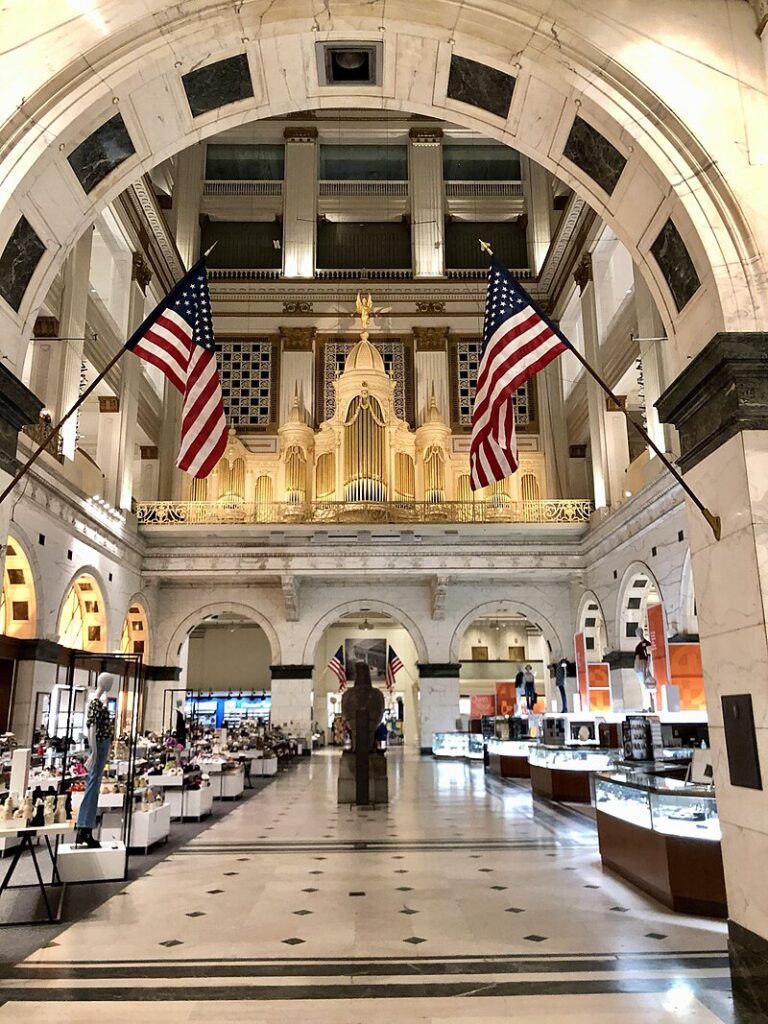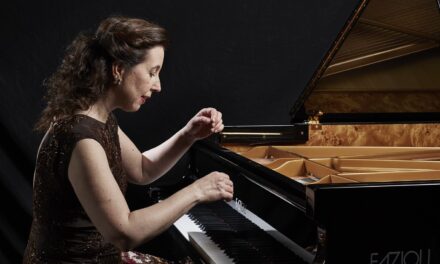Review by Mark Morris
Allan Gilliland (born 1965): Shadows and Light
Mendelssohn (1809-1847): Symphony No. 4 ‘Italian’, Op. 90
Jospeph Jongen (1873-1953): Symphonie Concertante for organ and orchestra, Op. 81
Paul Jacobs (organ)
Edmonton Symphony Orchestra
conducted by Carolyn Kuan
Winspear
April 11, 2025
The Edmonton Symphony Orchestra’s Friday evening concert on April 11 saw the return of a popular visitor to the Winspear, the American organist Paul Jacobs. Back in 2014 he had introduced Edmontonians to Guilmont’s Organ Symphony No.2 (review). In 2017 it was the turn of the popular Poulenc Organ Concerto. In 2021 it was another concert favourite, Saint-Saëns’ Symphony No. 3 for organ and orchestra, together with another rarity, Horatio Parker’s Organ Concerto. And for 2025, a welcome opportunity to hear the Belgian Joseph Jongen’s Symphonie Concertante for organ and orchestra, Op. 81.
The concert also saw the ESO debut of the conductor Carolyn Kuan. Born in China in 1977, she went to study in the States at the age of 14, and has had a distinguished career ever since, with posts at the Seattle Symphony Orchestra and the Hartford Symphony Orchestra, where she has been Music Director since 2011. She has conducted very widely internationally, and is noted for her performances of modern operas.


The concert started with a work that was commissioned by the ESO in 2000. Allan Gilliland is Dean Emeritus, Faculty of Fine Arts and Communications at MacEwan University, and was the ESO’s composer-in-residence from 1999 to 2004. He is best known for his works with jazz influence, though that was completely absent from the 11-minute orchestral Shadows and Light, written for a medium-sized orchestra that includes a piano. Although structured in three main sections, the principal effect is the contrasts of tone between material that has hints of impressionism (the light) and the building into climaxes (that are presumably the shadows). If the opening had distant hints of Ravel, there were touches of minimalism towards the end. It is a work of evolution rather than abrupt changes, happily tonal, quite evocative, and very well worth the revival. The composer was in the audience, and was rewarded with a performance that was both crisp and full of colour.
Jongen’s Symphonie Concertante, his best-known work, was commissioned in 1926 by the department store magnate Rodman Wanamaker. It was written for the organ in his Philadelphia department store, still the largest functioning pipe organ in the world. In the event, following Wanamaker’s death, the work was premiered in Brussels in 1928.

As one might expect with such a provenance, it is a grand work indeed, optimistic and bold, and essentially triumphant. The organ is often a kind of block within the orchestra, rather than concerto style (hence the title), but nonetheless an exceedingly virtuoso block. The composer Ysaÿe thought that the work was a confrontation between two orchestral forces, the orchestra and the organ, but they are regularly in consort.
The first movement, in a free sonata form, sets the joyful tone, with a regular sense of rising phrases and brass effects, but closing more softly with an ending reminiscent of Delius. The most effective second movement opens with a very Gallic idea on the solo organ, like mice running up and down the pipes, and is the most concerto-like in the work, organ passages interspersing with the orchestra. The orchestra initiates a delightful dance, and the movement regularly changes time signatures. After veering a little into something darker, and assaying a grand organ cadenza, it returns to being playful, and ends in a pastoral mood. The very concertante third has a gorgeous, impressionistic tone (shades of Debussy in the solo flute opening, Respighi in the shimmering strings), and the feel of an evening or nightscape. The stars come out to a rocking idea in the organ, a central section has lyricism from the brass, and the Respighian golden vistas return for the end – what a lovely movement this is. The finale is full of joy and confidence, and utilizes the full powers of the organ, building and building, cymbal clashes included, into what is a gigantic wall-of-sound ending.
Audience, orchestra, conductor, and organist all revelled in it, in a performance that was as triumphal as that final movement. The orchestra here notably had a richer tone than in the work that ended the first half, Mendelssohn’s Italian symphony. In spite of the high energy opening and close, this was a little disappointing. It was, one had hoped, the opportunity to hear Kaun’s personal stamp as conductor, as the work is such a perennial favourite. In the event the interpretation and the conducting were unexceptional, the crucial woodwind rather subdued in the balance.
No disappointment, though, in the encore which the audience had undoubtedly been hoping for. For here Jacobs, who has just the right sense of showmanship for such things, continued the triumphal theme of the Jongen with a solo transcription of the orchestral Sinfonia from the opening of Bach’s Cantata No. 29. That was a festive work, with a joyous text, and the opening Sinfonia reflects that, with prominent brass. It is ideal for an organ transcription, and Jacobs indeed pulled out all the stops. big, blaring, extrovert, showing off the voices and the power of the organ.
The tile of Bach’s cantata is Wir danken dir, Gott, wir danken dir (We thank you, God, we thank you), a fitting sentiment for such an exuberant end to an exhilarating concert.



